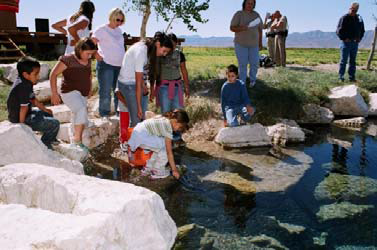Should I Be Concerned About Eating Fish and Shellfish?
For most people, the risk from eating contaminated fish and shellfish is not a health concern. However, some groups of people such as pregnant women, children and the elderly are at a greater health risk than others. Additionally, some individuals are at a higher risk simply because they eat substantially more fish than others.
EPA and FDA issue advice on eating fish and shellfish for women about 16-49 years old, especially pregnant and breastfeeding women, and young children.
The Interstate Shellfish Sanitation Conference (ISSC) was formed in 1982 to foster and promote shellfish sanitation through the cooperation of state and federal control agencies, the shellfish industry and the academic community.
Women Who Are Pregnant, May Become Pregnant or Are Nursing

The nutritional value of fish is important during growth and development before birth, in early infancy for breastfed infants and in childhood. The health risks from mercury in fish and shellfish depend on the amount of fish and shellfish a person eats and the levels of mercury in the specific fish and shellfish. Some fish contain higher levels of mercury that may harm an unborn baby or young child's developing nervous system.
As a result, women who are pregnant or may become pregnant and women who are nursing risk exposing their children to contamination if they eat these fish.
The EPA-FDA Advice about Eating Fish: What Pregnant Women and Parents Should Know recommends that women who are pregnant, may become pregnant, or are breastfeeding eat 2 to 3 servings (8 to 12 ounces) of fish each week from choices that are lower in mercury. The advice includes a chart that shows how often women and children can eat more than 60 types of fish and shellfish. The fish are grouped into “best choices,” “good choices” and “choices to avoid” based on mercury content.
Children

The EPA-FDA Advice about Eating Fish: What Pregnant Women and Parents Should Know recommends that children eat 1 to 2 servings of fish each week from choices that are lower in mercury, but in smaller portion sizes than adults. Children who are 2 to 3 years old should eat 1 ounce per serving, 4 to 7 years old should eat 2 ounces per serving, 8 to 10 years old should eat 3 ounces per serving, and children 11 and older can eat adult-sized portions of 4 ounces. The advice includes a chart of more than 60 types of fish and shellfish grouped into “best choices,” “good choices” and “choices to avoid.”
Elderly and Those With Underlying Health Conditions

The elderly and those with underlying health conditions may be more susceptible to adverse health effects from contaminated fish even if contamination levels are low.
Both of these groups are at a greater risk to negative health impacts because their bodies may be less able to remove these contaminants safely from their systems. Therefore, these people should limit their consumption of fish and shellfish that may be contaminated.
High Consumers of Fish

Eating fish frequently and/or in large quantities can pose a significant health risk because mercury and other contaminants tend to build up in your body over time. This can expose a person to more contamination.

These groups should pay particular attention to the types of fish they consume, the amount of fish and the waters that they eat fish from to ensure that they do not put their health at risk.
- For more information see the FDA Table of Mercury Levels in Commercial Fish and Shellfish.
Want to learn more?
EPA's Technical Resources provides more information for fish tissue studies information and other fish consumption advisory data and reports.
